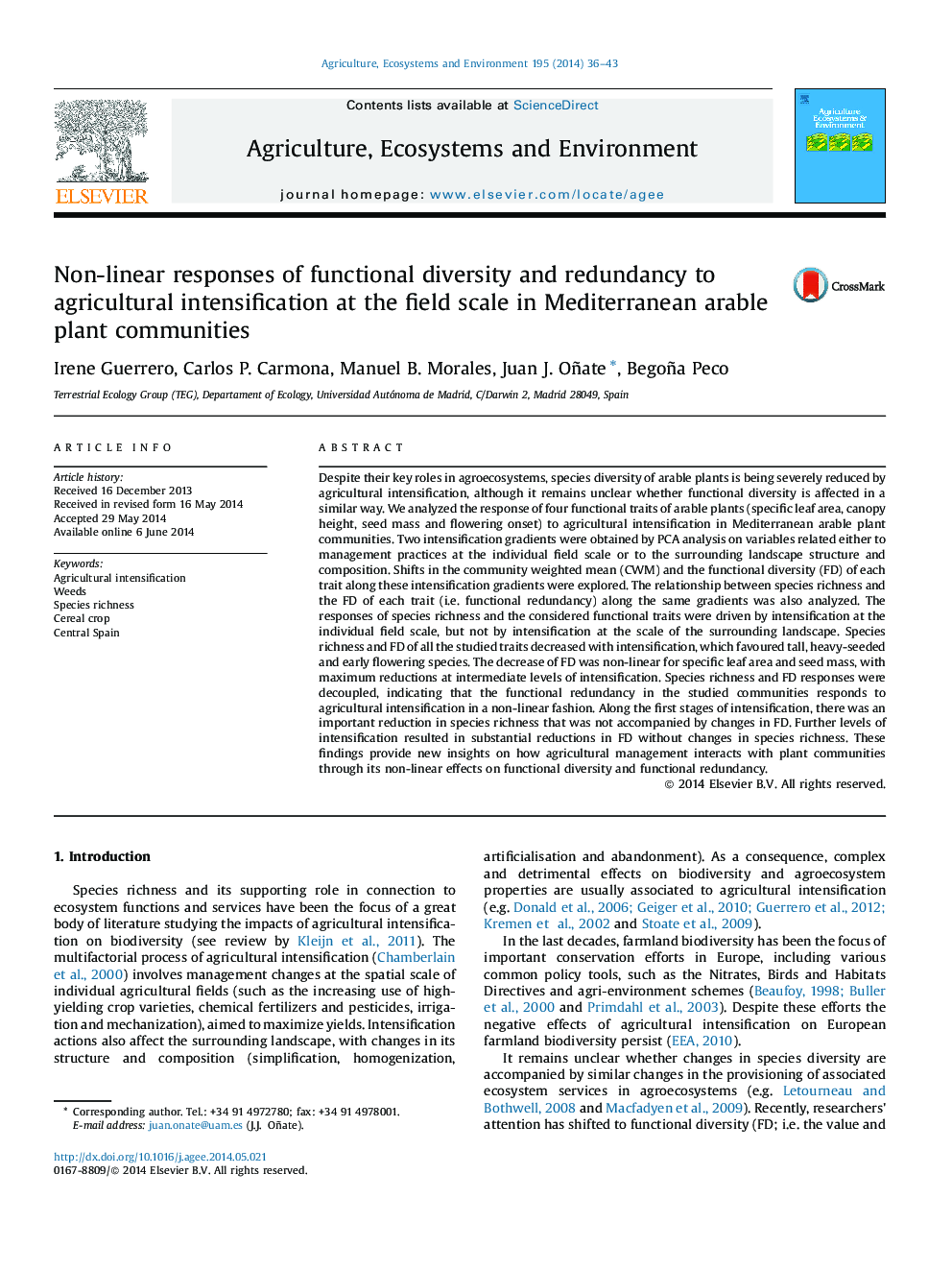| Article ID | Journal | Published Year | Pages | File Type |
|---|---|---|---|---|
| 2413906 | Agriculture, Ecosystems & Environment | 2014 | 8 Pages |
•Analyzed how agricultural intensification affects arable plants functional traits.•Clear effects of intensification at the field-scale, not at the landscape-scale.•Tall, heavy-seeded and early flowering species favoured by intensification.•Species richness and functional diversity decreased with intensification.•Non-linear response of functional redundancy along the intensification gradient.
Despite their key roles in agroecosystems, species diversity of arable plants is being severely reduced by agricultural intensification, although it remains unclear whether functional diversity is affected in a similar way. We analyzed the response of four functional traits of arable plants (specific leaf area, canopy height, seed mass and flowering onset) to agricultural intensification in Mediterranean arable plant communities. Two intensification gradients were obtained by PCA analysis on variables related either to management practices at the individual field scale or to the surrounding landscape structure and composition. Shifts in the community weighted mean (CWM) and the functional diversity (FD) of each trait along these intensification gradients were explored. The relationship between species richness and the FD of each trait (i.e. functional redundancy) along the same gradients was also analyzed. The responses of species richness and the considered functional traits were driven by intensification at the individual field scale, but not by intensification at the scale of the surrounding landscape. Species richness and FD of all the studied traits decreased with intensification, which favoured tall, heavy-seeded and early flowering species. The decrease of FD was non-linear for specific leaf area and seed mass, with maximum reductions at intermediate levels of intensification. Species richness and FD responses were decoupled, indicating that the functional redundancy in the studied communities responds to agricultural intensification in a non-linear fashion. Along the first stages of intensification, there was an important reduction in species richness that was not accompanied by changes in FD. Further levels of intensification resulted in substantial reductions in FD without changes in species richness. These findings provide new insights on how agricultural management interacts with plant communities through its non-linear effects on functional diversity and functional redundancy.
Graphical abstractFigure optionsDownload full-size imageDownload as PowerPoint slide
